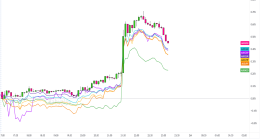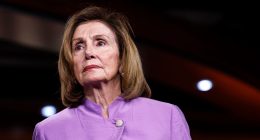
After a marathon voting session over the weekend, the Senate passed a massive $1.9 trillion stimulus package–dubbed the American Rescue Plan Act. The legislation means another $50 billion in aid for small business through the Paycheck Protection Program, as well as grants for bars and restaurants and shuttered venues. No Republicans voted to approve the measure.
The Senate bill, which awaits final approval by the House and President Joe Biden, does not boost the federal minimum wage, which now stands at $7.25 an hour and hasn’t been lifted since 2009. The House voted in late February to raise the minimum rate to $15 an hour by 2025. It’s unclear whether some House Democrats will contest the bill absent the minimum wage provision, or agree to move ahead and raise the issue later. Lawmakers generally want to pass legislation by March 14–the date enhanced federal unemployment benefits are due to expire.
Either way, here’s what’s currently in the offing for small business:
$7.25 billion for the PPP: More money; but not more time. The forgivable loan program aimed at small businesses was not extended past its current end date of March 31 despite widespread calls from the business community for more time. A coalition of businesses led by the U.S. Chamber of Commerce sent a letter to lawmakers this week, urging them to extend the PPP through year end. The Senate bill does add $7.25 billion to the program, which kicked off again in mid-January with $284.5 billion. Some larger nonprofits will also become eligible.
$15 billion for Economic Injury Disaster Loan (EIDL) Advance Grants: Small businesses in low-income communities that have been most affected by the pandemic will be eligible for up to $10,000 each. The program is designed to roll out in a series of exclusive windows, starting with businesses that didn’t get the full amount they applied for initially–that is, $1,000 per employee, up to $10,000. Eligible businesses must have no more than 300 employees and have suffered a loss of gross receipts of more than 30 percent during an eight-week period between March 2, 2020 and December 31, 2021, compared with an eight-week period prior to March 2.
The second window is for those who’ve endured losses of 50 percent and have fewer than 10 employees. The third is for those who’ve had losses of between 30 percent and 50 percent and have fewer than 10 employees. The Small Business Administration (SBA) must provide $5,000 grants to each eligible company, while funds last.
This program, which was extended through 2021, had been re-funded with $20 billion in the last stimulus package. The grants of up to $10,000 were offered to business owners under duress early on in the pandemic. But to conserve funds, the SBA had to reduce the advance to $1,000 per employee before phasing out the grants entirely last July. The second relief package, passed in December, also protected grant recipients from having their forgiveness calculation reduced by the amount of the grant. So if you had a $100,000 PPP loan and a $10,000 EIDL advance grant, your loan forgiveness would no longer be reduced by $10,000 as it would be under the Cares Act.
Extends the Employee Retention Credit: The ERC gets extended until year end. In the new bill, businesses can claim the refundable credit equal to as much as $7,000 per employee per quarter during the last half of the year. So, including the existing provision, which is similarly apportioned, employers this year would qualify for up to $28,000 per employee–and if they applied for 2020, the total amount available is $33,000 per employee.
Eligible employers in 2021 include companies that experienced a full or partial suspension of operations as a result of government mandates, or those that can show at least a 20 percent reduction in quarterly gross receipts, compared with the same quarter in 2019. Companies eligible for the 2020 credit must show a more than 50 percent decline in gross receipts. Recipients can’t take a tax deduction on expenses paid for with PPP funds, a continuation of current law.
$28.6 billion in grants for food services businesses: The grants available to bars, restaurants, and caterers would be equal to the difference between a business’s gross receipts pre-pandemic–that is, in 2019–and gross receipts last year. If the business has fewer than 20 locations, it can get a grant of up to $5 million per location, up to $10 million in total.
$1.25 billion for shuttered venue operators: The grants are available to movie theaters, museums, performance venues, and other institutions whose principal business activity is live events. The grants are equal to the lesser of 45 percent of the venue’s gross revenue in 2019 or $10 million. It’s notable, however, that the SBA has yet to enact the existing live-venue grant program, which was passed under the last relief package. That’s worth $15 billion, once it actually goes live.
$175 million for a “community navigator” program: Community organizations or community financial institutions can get funding to provide outreach, education, and technical assistance to help eligible small businesses become aware of and participate in Covid-19 relief programs. It prioritizes increasing access among businesses owned by socially and economically disadvantaged individuals, women, and veterans.
This article is from Inc.com








